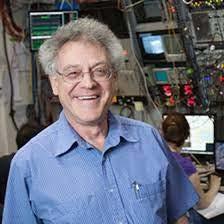
Dr. Sol M. Gruner
Wednesday, November 8th
4:00 pm – 5:00 pm
Refreshments at 3:30 p.m
Location: CBIS Auditoirum
Biography: Dr. Sol M. Gruner is the John L. Wetherill Emeritus Professor of Physics at Cornell University. He obtained his Ph.D. degree in Physics in 1977 from Princeton University. Studies on the phase behavior of biomembrane lipids occupied Sol’s attention through the decade of the 1980’s. He introduced concepts of elasticity from liquid crystal physics as applied to lipid monolayers to understand the phase behavior of lipid-water systems. Much of the now commonly used language in the biophysical literature on lipid spontaneous curvature can be traced to Sol’s publications of this period. In 1990, Gruner was named a Fellow of the American Physical Society “For major contributions to the understanding of structure and function of biomembranes. His research has provided insight on the physical basis of lyotropic mesomorphism.” In 1986 Sol became interested in block copolymers. In 1994 his group discovered the block co-polymer gyroid morphology. This led to a rapid expansion of discoveries in block copolymer physics and materials science and what is now a huge literature based on block copolymer gyroid phases. Throughout his career Sol has developed x-ray and electron microscope technology, especially imaging detectors. Today much of the world’s protein structural data has been acquired using detector technology developed by Sol and people trained in his lab. In 2001 Sol was named a Fellow of the American Association for the Advancement of Science “For pioneering contributions to the study of biological systems using advanced techniques of x-ray physics and for leadership in the development of synchrotron radiation instrumentation.” Other of his trainees went on to develop some of the first practical cell phone cameras.
Abstract: Discoveries of prevalent microbiota in deep rock have upended assumptions about life on Earth. This Deep Life lives on residual chemical and radioactive energy sources and is a significant fraction of Earth’s biomass. This raises profound questions about how and where life evolved, how Deep Life differs from surface life, the minimum requirements to sustain cells, the maximum temperatures and pressures under which organisms can remain viable, and effects of deep environmental conditions on the properties of biomacromolecules. The lecture serves as a historical overview as to why it is important to study the effects of high pressure and other extreme conditions on biomacromolecules.
